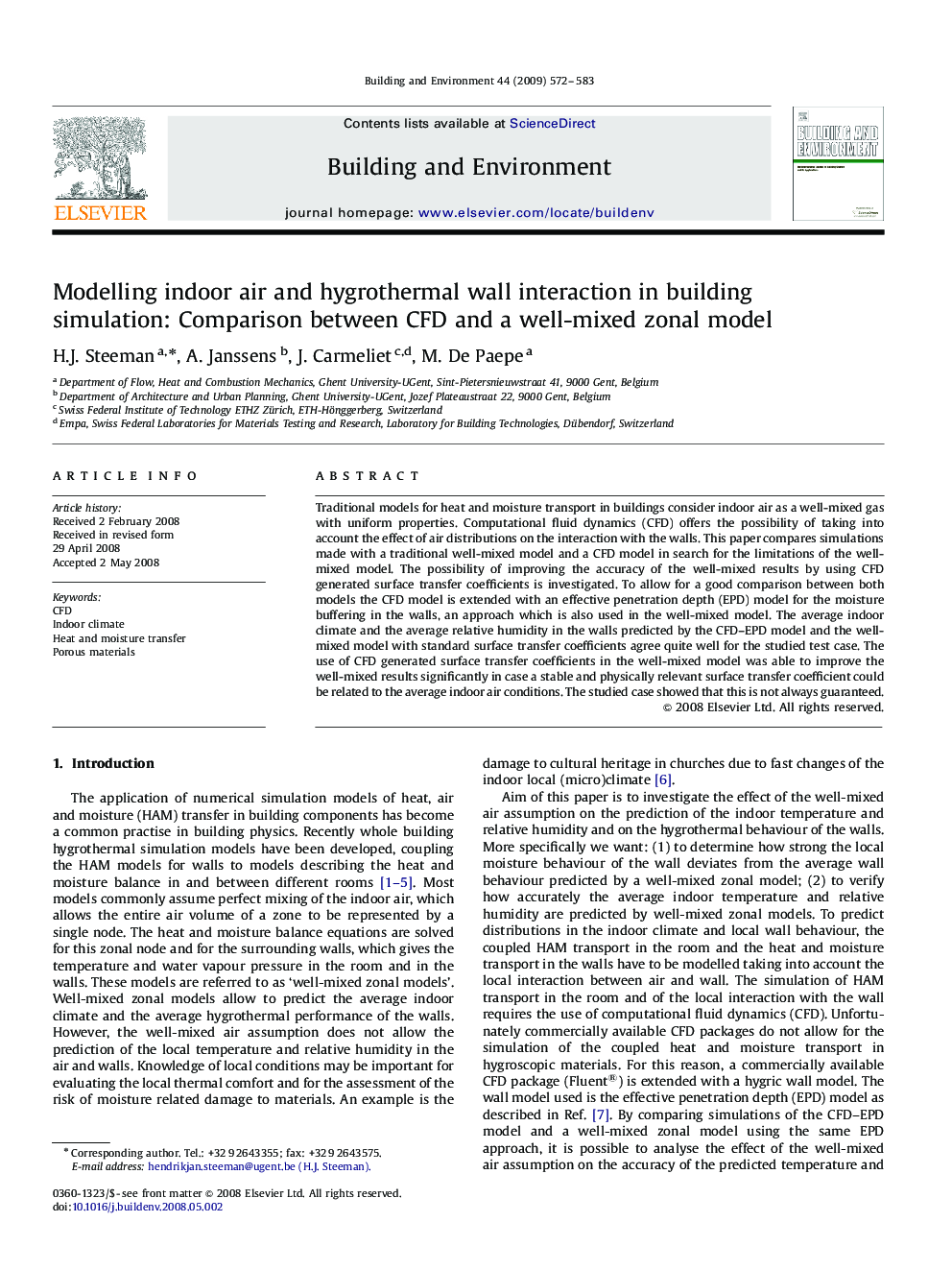| کد مقاله | کد نشریه | سال انتشار | مقاله انگلیسی | نسخه تمام متن |
|---|---|---|---|---|
| 249615 | 502619 | 2009 | 12 صفحه PDF | دانلود رایگان |

Traditional models for heat and moisture transport in buildings consider indoor air as a well-mixed gas with uniform properties. Computational fluid dynamics (CFD) offers the possibility of taking into account the effect of air distributions on the interaction with the walls. This paper compares simulations made with a traditional well-mixed model and a CFD model in search for the limitations of the well-mixed model. The possibility of improving the accuracy of the well-mixed results by using CFD generated surface transfer coefficients is investigated. To allow for a good comparison between both models the CFD model is extended with an effective penetration depth (EPD) model for the moisture buffering in the walls, an approach which is also used in the well-mixed model. The average indoor climate and the average relative humidity in the walls predicted by the CFD–EPD model and the well-mixed model with standard surface transfer coefficients agree quite well for the studied test case. The use of CFD generated surface transfer coefficients in the well-mixed model was able to improve the well-mixed results significantly in case a stable and physically relevant surface transfer coefficient could be related to the average indoor air conditions. The studied case showed that this is not always guaranteed.
Journal: Building and Environment - Volume 44, Issue 3, March 2009, Pages 572–583